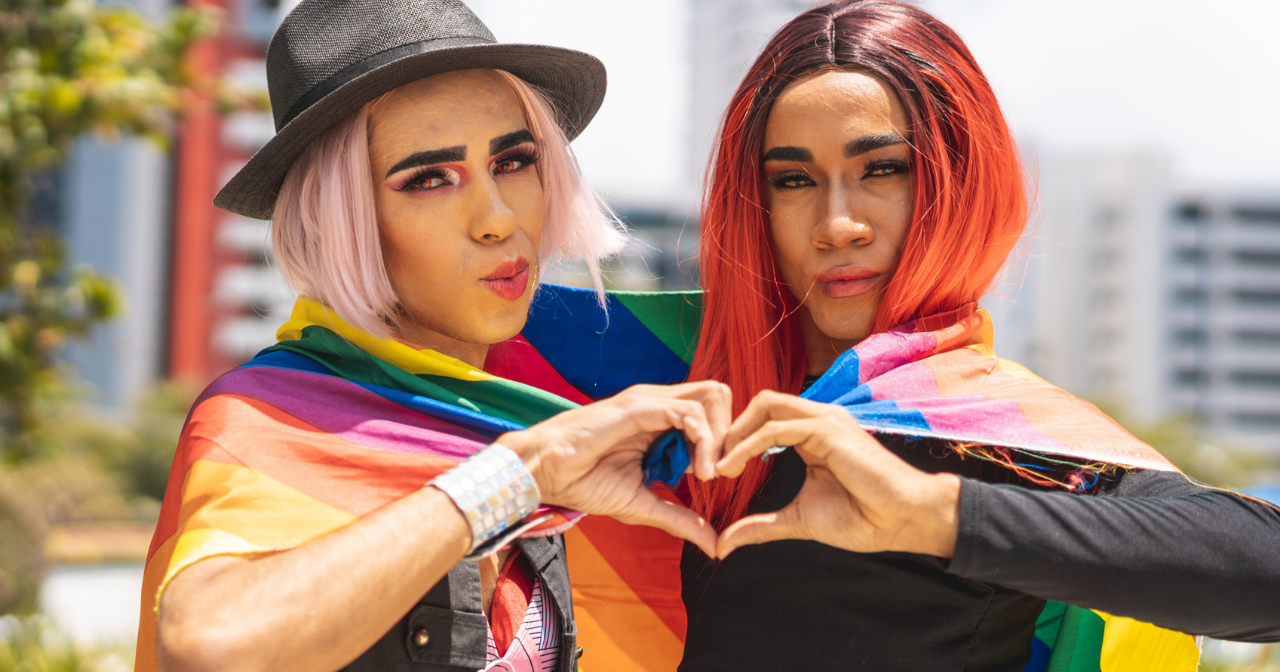


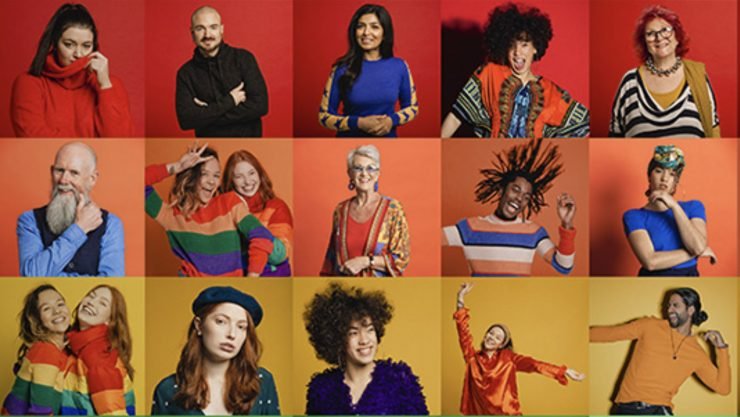
My Thoughts
I’ve always tried to be open minded and supportive of people with alternative lifestyles. My lifestyle has not been that traditional itself so I can relate. My wife Robyn on our first formal date told me that she was bisexual (I tell people that having been a pilot I thought this meant she liked to have sex in biplanes!) Her orientation, which she had known about since reaching puberty, did not matter to me as I was only concerned that if we one day married might she have a regret that she had not married a woman instead? My worry was unfounded. While we were dating, we would go and dance together at a gay nightclub in downtown San Jose, California (no, we did not nor do we drink any alcohol.) My best man at our wedding was a friend and coworker who is gay. A few years after moving to Las Vegas we took over running a bisexual support group that we had joined. We attended a gay church (Metropolitan Community Church, a denomination that had broke off from the Assemblies of God way back in 1968) occasionally for a year. The motorcycle club in Las Vegas which we belonged to had gay, bi and straight members. We know two married lesbian couples and another lesbian couple currently dating. We have a gay friend that likes to occasionally explore his female side and dress-up accordingly. Over the years Robyn and I have acquired many gay, bi, and transgender friends. How many non-straight people do you know? Are they your friends?
I have two friends I have known since high school who are both gay. One of them is Jewish and one of them is Christian. The Christian one tried to be obedient to his Evangelical/Pentecostal beliefs and entered a Christian Assembly of God supported Bible school (their oldest school at the time) after high school, but was eventually kicked out for lewd acts with another student. (The school eventually closed in 2011 due to low enrollment and financial difficulties and has since been purchased and turned into a ‘new agey’, non-religious rentable retreat center by a wealthy Silicon Valley professional and his wife under the name of the 1440 Multiversity. Here is their brochure.) Obviously there are gay Christians in the world, and some of them are even in fundamentalist Bible schools. After being asked to leave and being forced to sign a document that he would not sue them for mental anguish, my friend enrolled in another Bible school, was asked to leave that one, joined the military, was kicked out because of his sexuality a few months later and after several years of struggle and therapy, found his male mate and they have been together for over 30 years, longer than many of the heterosexual marriages that I have known, including my own!
What I don’t understand is how fundamentalist Christians, and I am specifically including Evangelical, Pentecostal, Mormon, Jehovah’s Witness, Seventh-day Adventist, Conservative Catholics, etc. can make their ill-founded declarations and statements that gay people choose to be gay and choose to engage in non-heterosexual sexual activities. Apparently being gay is as easy as switching political parties! These groups believe (because of their rigid assumed 100% correct Biblical worldview) that gay people just all of a sudden wake up one day and decide to be gay even though they may lose their family, their religious fellowship, their religious friends, and in some cases their jobs (and in some countries their life!) in order to make life difficult for themselves going forward! That’s right, they are heterosexual until one morning they wake up and decide they are no longer heterosexual. They have now decided to become homosexual. Do you really think this is a choice? Really? You don’t think that maybe, just like in nature, there are more possibilities than one? That sexual attraction and gender identities are possibly not fixed or even binary?
I once heard a PhD (he is a Clinical Geneticist and US Military Biochemist/Officer. This makes him an expert in molecular diagnostics, genetics, genetic disease, microbiology, and biology in medical research) say that in nature there are no binaries. Skin color, hair color, hair length, eye color, etc. are variable and not fixed in one or even two states. That is just how nature works. Do we think that sexuality and gender identification must somehow break this diversity we find in nature and only be singular or binary? Of course not! There is a scale, a range for sexuality. People are not all 100% straight or 100% gay. There are bisexuals, and gay and bi-curious individuals that exist everywhere but are regulated by their religious or societal beliefs, laws, rules and norms. Many are closeted or force themselves not to accept who they are out of guilt or fear. Their sexual choices and thoughts are regulated by these rules.
Do we think there are no gay or trans people in Islamic countries? No gay priests or ministers or gurus or imams or clerics anywhere in the world? Yes, many are closeted for self-preservation, whether that be because of their religious beliefs or for fear of losing their jobs or family connections or religious congregations. Do we think that everyone (100% of all humans) that are given a gender at birth because of their genitalia must therefore be mentally and psychologically in agreement with what is written on their birth certificate? No. There are different shades and variation, different degrees. This can easily be illustrated by looking at probability theory and the Gaussian normal distribution (bell curve). There are variations. There are edges to the bell curve. The bell curve is not a vertical line or two. That is just not how nature works, so why would you expect it to be that way with sexuality or gender identity?
A recent poll says that 7.2% of Americans admit they are gay. I believe the actual number is probably much higher because some are not ready to leave the closet or be willing to admit that they are not 100% straight when asked in a polling question. Some religious believers, regardless of their particular religion, are scared to admit that possibly some people (or themselves) are born (i.e. made by God in the image of God) trans or gay or bisexual and not 100% heterosexual? This realization might force them to reconsider their assumed beliefs of not being entirely correct. Uh Oh! God forbid! And if they admit and realize this, then might have to ask the question of why a loving and all knowing God would condemn people for just being born the way they are (i.e. made by God in the image of God)? And then they might have to reconsider the logic and reasons for their entire belief system! As George Takei would say, Ohhhh myyyy! Further, they might eventually conclude that God was wrong to condemn these people using imperfect humans that wrote an imperfect Bible (substitute any sacred scripture of man) to convey his supposed anger against certain natural desires of a person who just wishes to be left alone to be able to choose who they will love and be loved by. I believe that’s what it is, the fear that their entire safe and warm and accepted belief system might unravel and come crashing down because of logic and reason.
Yes, I blame religion a lot for these cultural attitudes that we have had, but must change. As you know, I generally support religion but if it’s hurting people somehow then I do not support religion in those particular ways. I will call them out. For instance, just as there are many cows walking around India while people starve yet their religion says they must not touch the cows. I believe that Christians must touch the sacred cow of their beliefs that they have been taught. That would be healthy for all of humanity.
LGBTQ+ Facts From ChatGPT 4.0 AI
LGBTQ+ History
Throughout human history, members of the LGBTQ+ community have faced a range of challenges and struggles, from persecution and discrimination to social exclusion and invisibility. Despite this, LGBTQ+ people have also made significant contributions to the arts, sciences, politics, and many other fields.
In ancient civilizations such as Greece and Rome, same-sex relationships were not uncommon, and there were even instances of same-sex marriage. However, in many other cultures, homosexuality was considered taboo and even punishable by death.
During the Middle Ages, the Christian Church took a harsh stance against same-sex relationships, viewing them as sinful and unnatural. This view persisted for centuries, and the persecution of LGBTQ+ people continued well into the modern era.
In the 20th century, many countries passed laws criminalizing homosexuality, and LGBTQ+ people were often subject to harassment, violence, and imprisonment. However, in the latter half of the century, the LGBTQ+ rights movement began to gain momentum, with activists and allies fighting for equal rights and protections.
In 1969, the Stonewall riots in New York City marked a turning point in the struggle for LGBTQ+ rights, sparking a wave of activism and advocacy around the world. Since then, many countries have repealed anti-LGBTQ+ laws and enacted protections against discrimination on the basis of sexual orientation and gender identity.
Despite these gains, however, LGBTQ+ people still face significant challenges in many parts of the world. In some countries, homosexuality is still punishable by death, and even in more accepting societies, discrimination and violence against LGBTQ+ people remain a problem.
Overall, the history of LGBTQ+ issues is a complex and ongoing story of struggle, resilience, and progress. While there is still much work to be done, the continued efforts of activists and allies offer hope for a more just and inclusive future for all.
Sodom and Gomorrah
The story of the destruction of Sodom is a well-known biblical account that appears in the Book of Genesis. According to the narrative, Sodom was a city in the region of Canaan that was destroyed by God as punishment for the wickedness and depravity of its inhabitants.
The specific cause of Sodom’s destruction is described in Genesis 19:1-29. Two angels arrived in the city and were welcomed into the home of Lot, a righteous man who lived there with his family. However, the men of Sodom surrounded Lot’s house and demanded that he turn over the angels so they could have sex with them.
The angels struck the men of Sodom with blindness and helped Lot and his family escape before God rained down fire and brimstone on the city, destroying it completely. The only survivors were Lot and his daughters, who were instructed not to look back at the destruction as they fled.
While the biblical story of Sodom has been widely interpreted as a condemnation of homosexuality, it is important to note that the specific sin of the city’s inhabitants is not explicitly described in the text. Some scholars have suggested that the story may have been intended to condemn inhospitality or other forms of moral corruption.
LGBTQ+ Youth
LGBTQ+ youth face unique challenges and pressures that can contribute to higher rates of mental health issues, including suicide. These challenges include discrimination, bullying, and rejection from family and peers. According to the Centers for Disease Control and Prevention (CDC), LGBTQ+ youth are more than four times as likely to attempt suicide than their heterosexual peers.
One of the main reasons for this increased risk is the pervasive social stigma and discrimination that LGBTQ+ youth face. Discrimination can take many forms, from overt acts of violence and hate crimes to more subtle forms of bias and prejudice. This can lead to feelings of shame, guilt, and isolation, as well as a sense of hopelessness and despair.
Bullying is another significant risk factor for mental health issues among LGBTQ+ youth. Research has shown that LGBTQ+ youth are more likely to experience bullying and harassment than their heterosexual peers, both in person and online. This can lead to depression, anxiety, and other mental health issues, as well as decreased academic performance and social isolation.
Finally, rejection from family and peers can also contribute to the increased risk of mental health issues among LGBTQ+ youth. Many LGBTQ+ youth report feeling unsupported or rejected by their families, which can lead to feelings of loneliness and despair. This can be particularly challenging for youth who may be struggling to come to terms with their sexual orientation or gender identity.
Overall, the higher rates of suicide and other mental health issues among LGBTQ+ youth are a serious concern that requires attention and action. Efforts to reduce stigma, discrimination, and bullying, as well as providing support and resources for LGBTQ+ youth, can help reduce these disparities and promote mental health and well-being for all.
Google BARD Answers Why There Is Prejudice Against LGBTQ
There are many reasons why people are prejudiced against LGBTQ+ people. Some of these reasons include:
Religion: Some religions teach that homosexuality is a sin, and this can lead to prejudice against LGBTQ+ people.
Culture: Some cultures have traditionally been homophobic, and this can lead to prejudice against LGBTQ+ people.
Fear of the unknown: Some people are afraid of things that they don’t understand, and this can lead to prejudice against LGBTQ+ people.
Misinformation: Some people are misinformed about LGBTQ+ people, and this can lead to prejudice.
Personal experience: Some people have had negative experiences with LGBTQ+ people, and this can lead to prejudice.
It is important to remember that prejudice is not always based on logic or reason. It is often based on fear, ignorance, or misinformation. It is important to challenge prejudice and to educate people about LGBTQ+ people. We can all help to create a more inclusive and accepting world.
LGBTQ+ Resources
The Trevor Project: A national organization providing crisis intervention and suicide prevention services to LGBTQ+ youth. They offer a 24/7 hotline, text, and chat services, as well as resources and support for youth and their families. Website: https://www.thetrevorproject.org/
GLAAD: A media advocacy organization that works to promote positive representation of LGBTQ+ people in the media. They offer resources and support for LGBTQ+ youth and their families. Website: https://www.glaad.org/
It Gets Better Project: A nonprofit organization dedicated to uplifting and empowering LGBTQ+ youth through storytelling and community building. They offer resources and support for youth and their families. Website: https://itgetsbetter.org/
PFLAG: A national organization providing support and resources for LGBTQ+ people and their families. They offer support groups, education, and advocacy efforts. Website: https://pflag.org/
National LGBT Health Education Center: A program of the Fenway Institute that offers training and resources for healthcare providers working with LGBTQ+ patients, as well as resources and support for LGBTQ+ youth and their families. Website: https://www.lgbthealtheducation.org/
Trans Lifeline: A nonprofit organization offering a hotline and other resources for transgender and nonbinary people in crisis. Website: https://translifeline.org/
Gender Spectrum: A nonprofit organization providing resources and support for gender-diverse youth and their families. Website: https://www.genderspectrum.org/
GLSEN: A national organization working to create safe and inclusive schools for LGBTQ+ youth. They offer resources, training, and support for educators and students. Website: https://www.glsen.org/
These are just a few examples of the many resources available for LGBTQ+ youth. It is important to remember that seeking support and resources is a sign of strength, and that help is available for those who need it.
Some LGBTQ+ Links







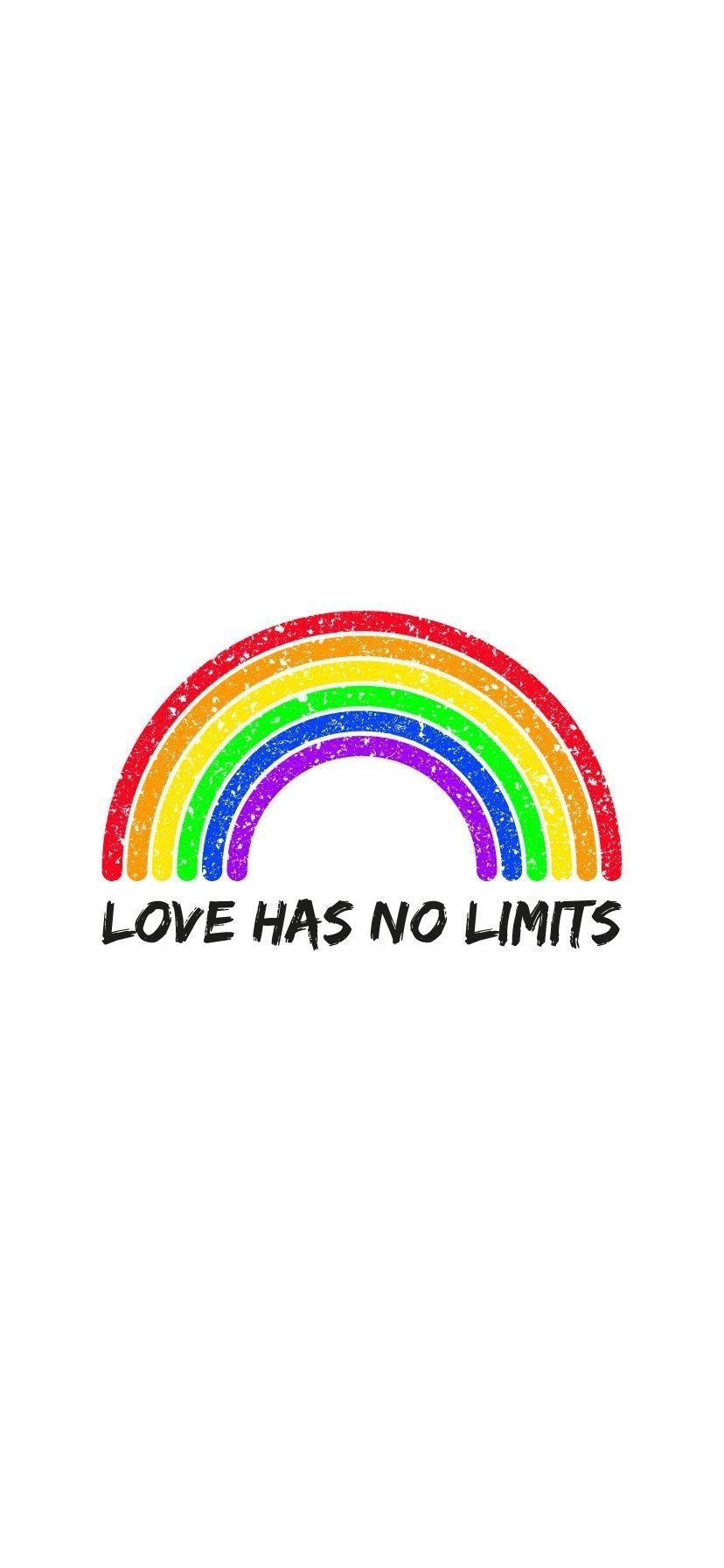
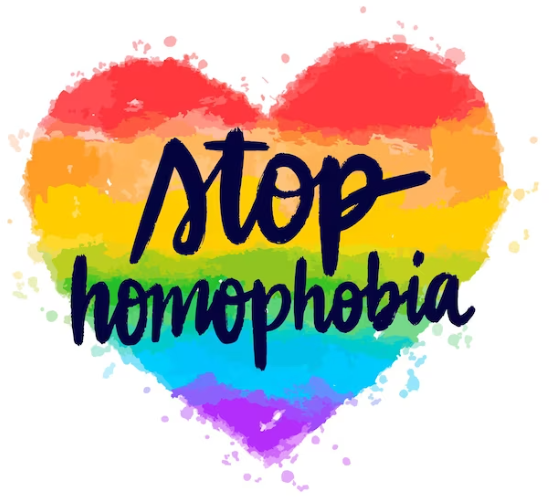


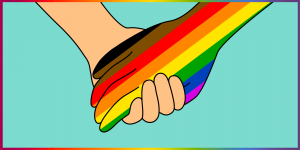


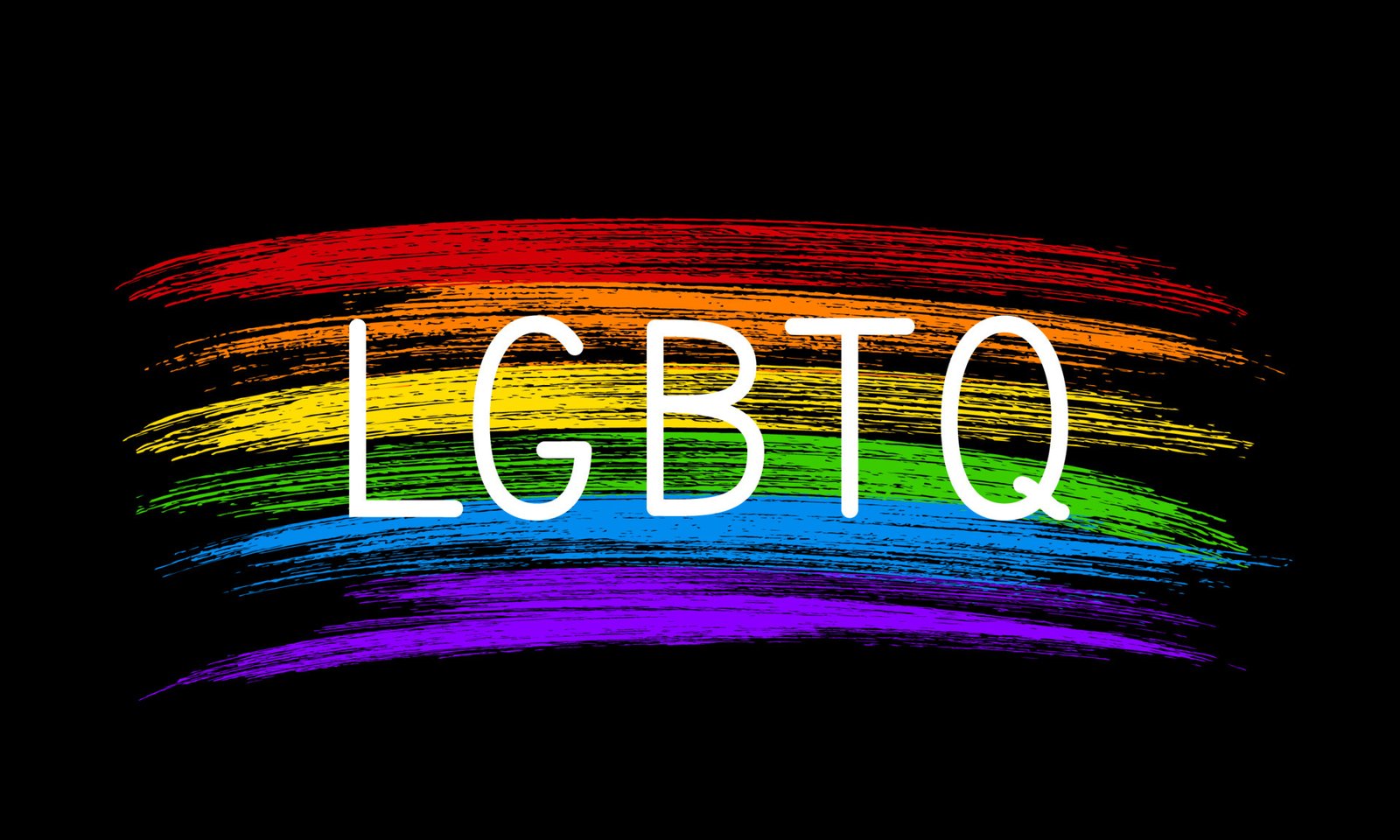


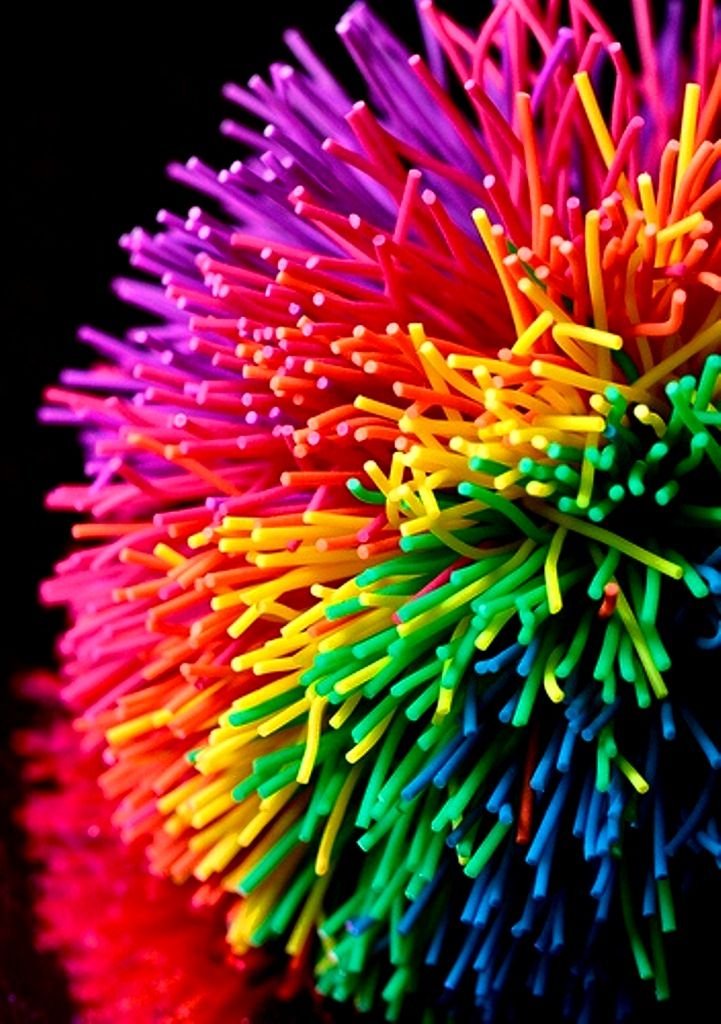
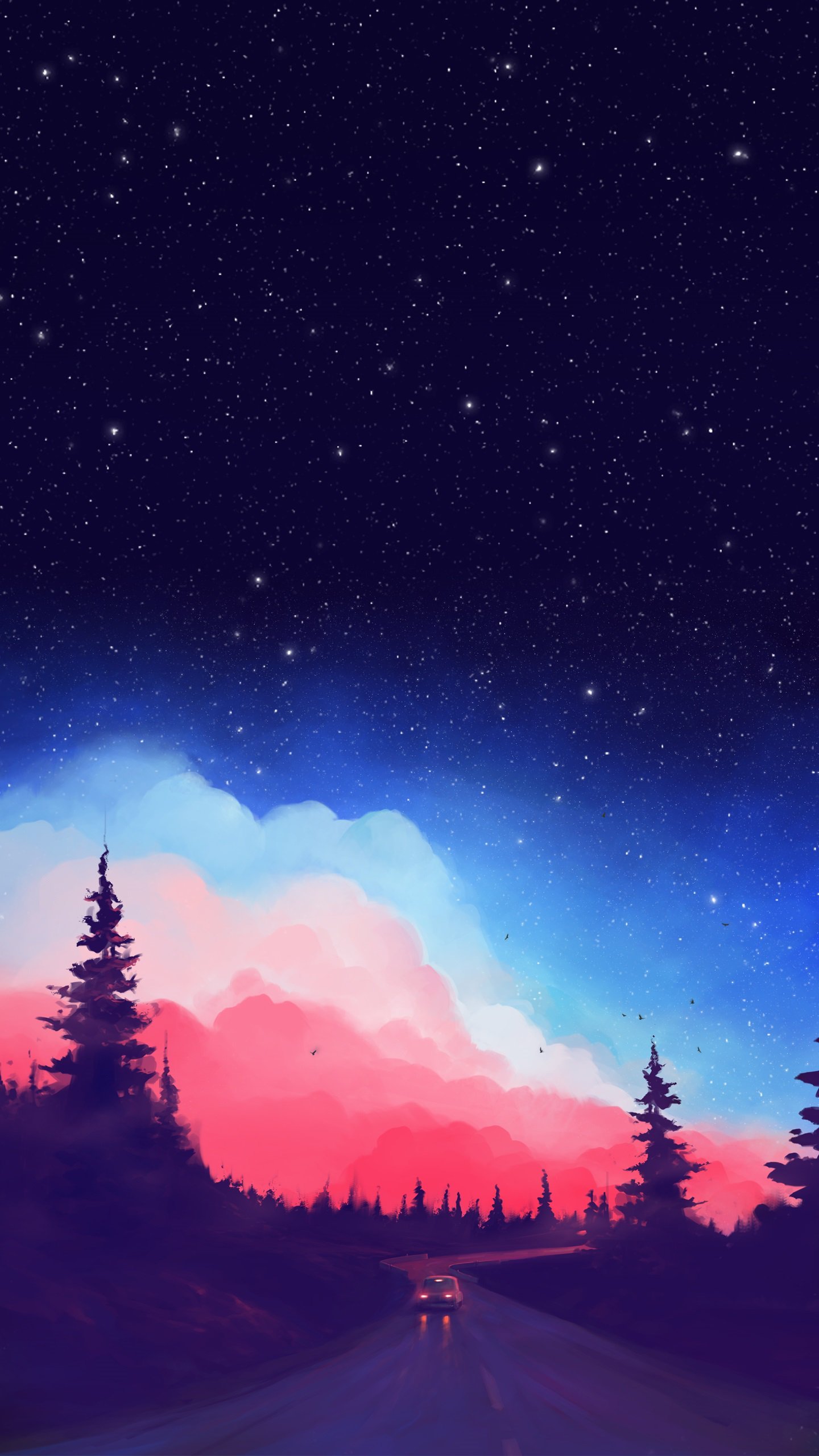

















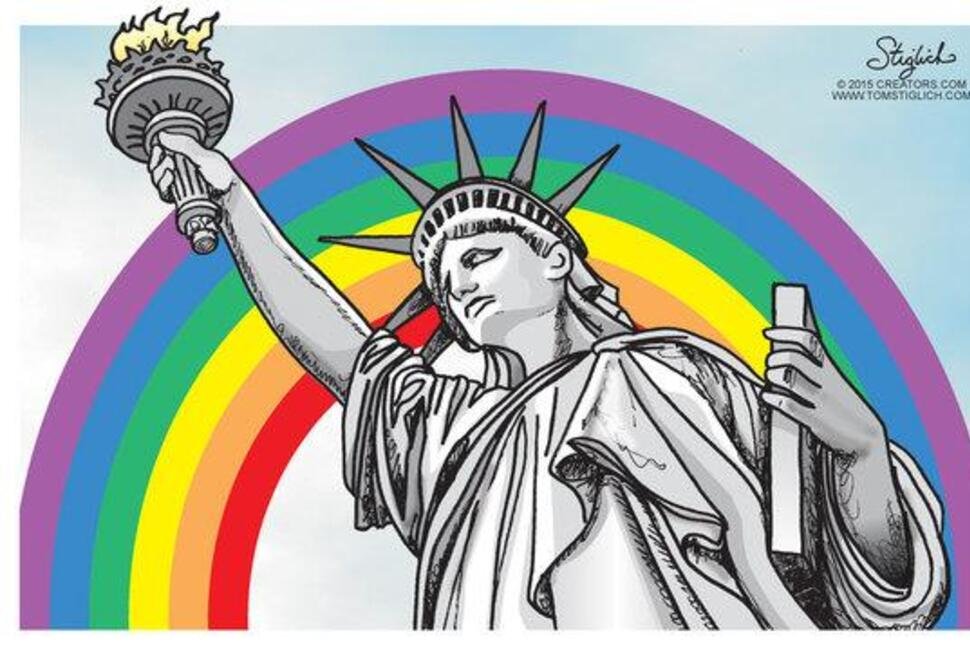
 using WordPress and Kubio.
using WordPress and Kubio.